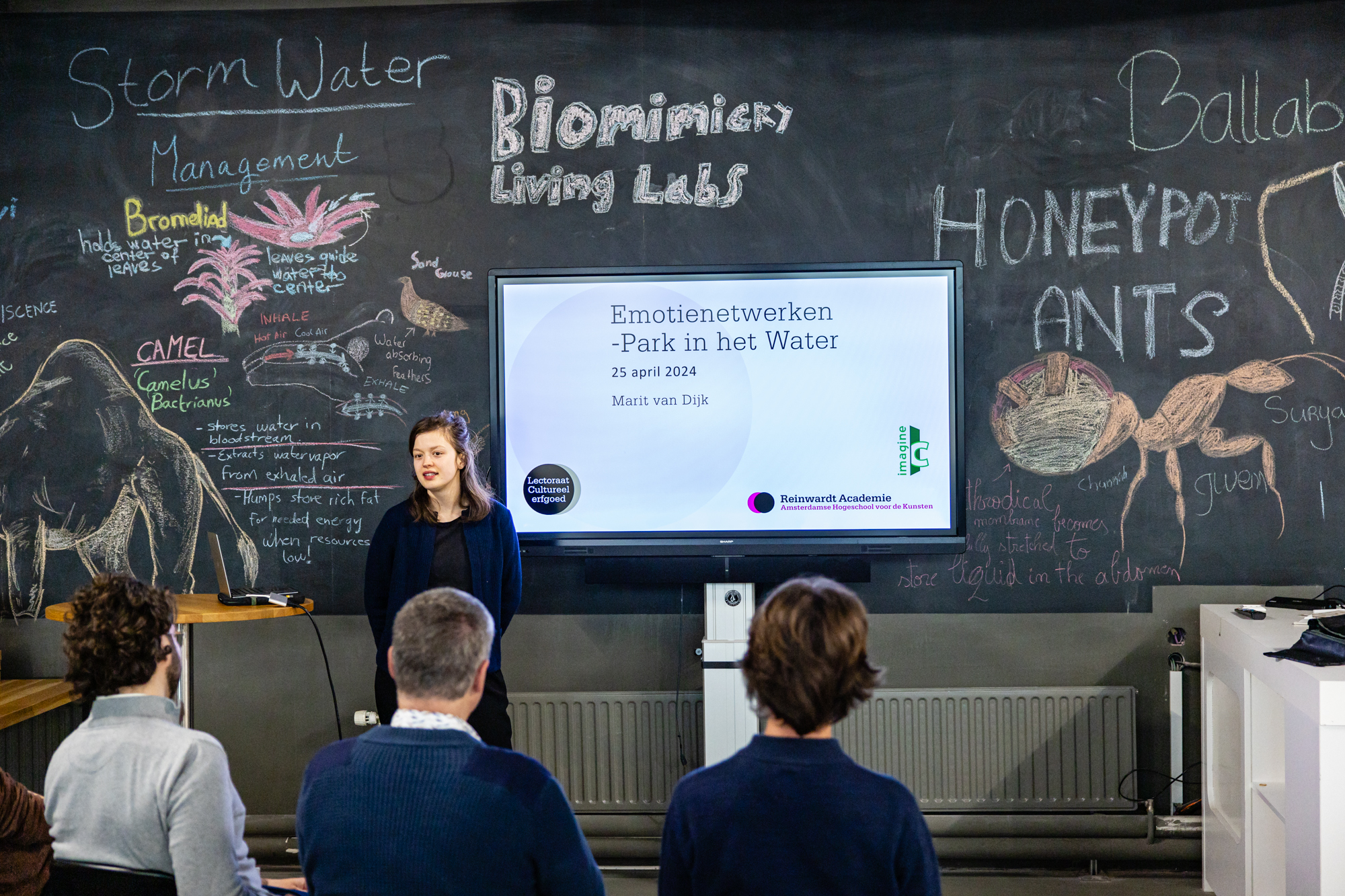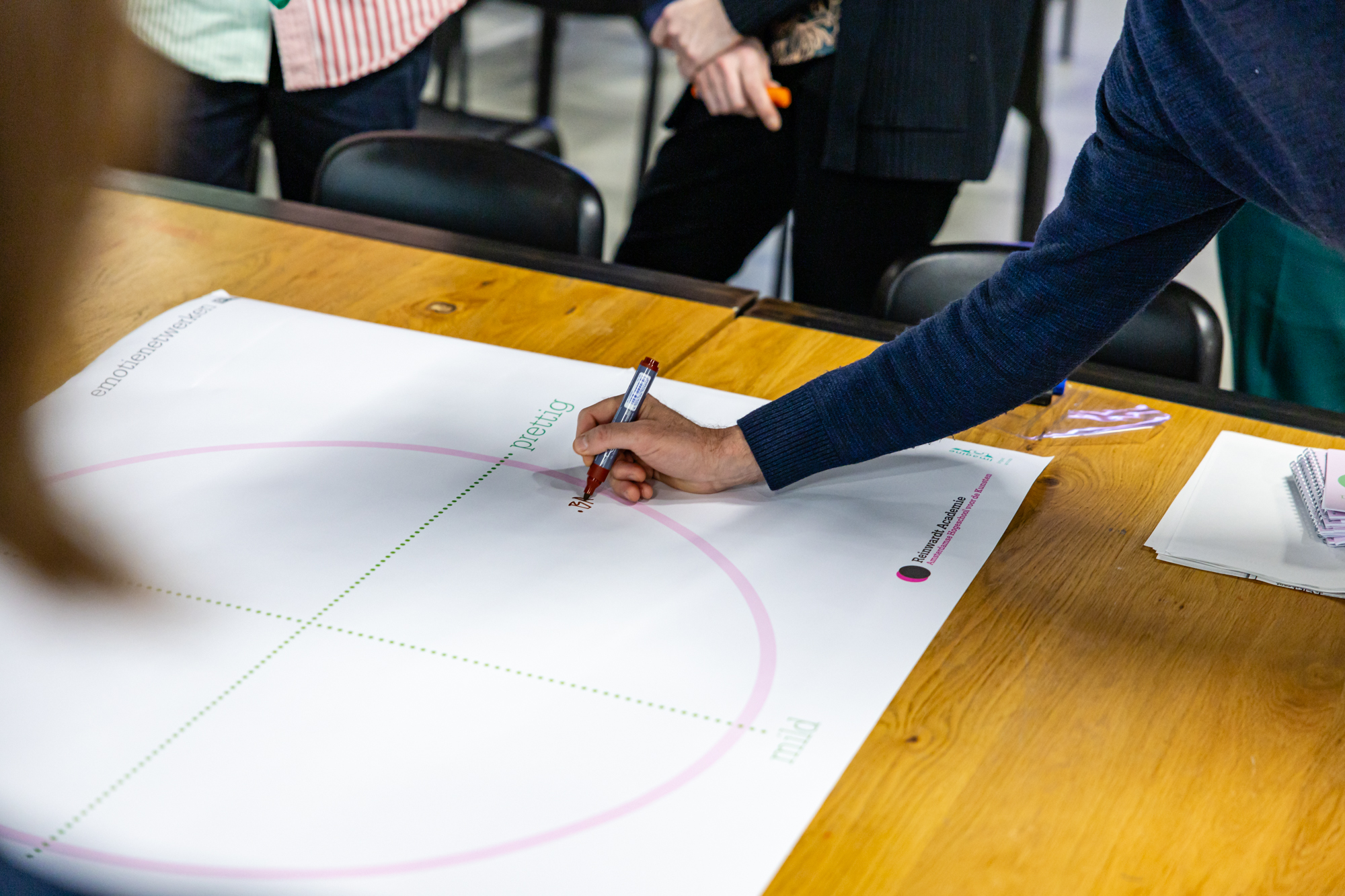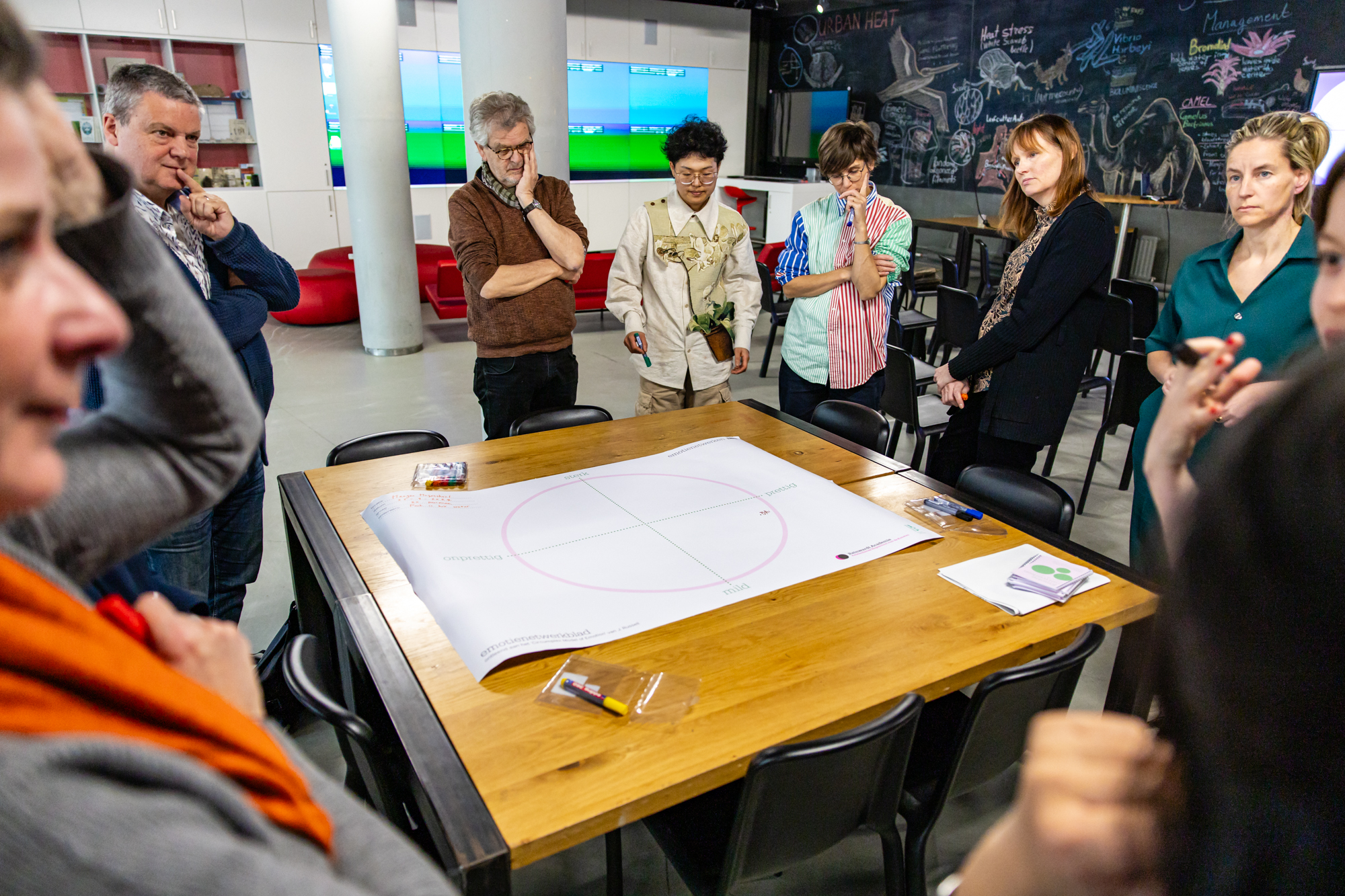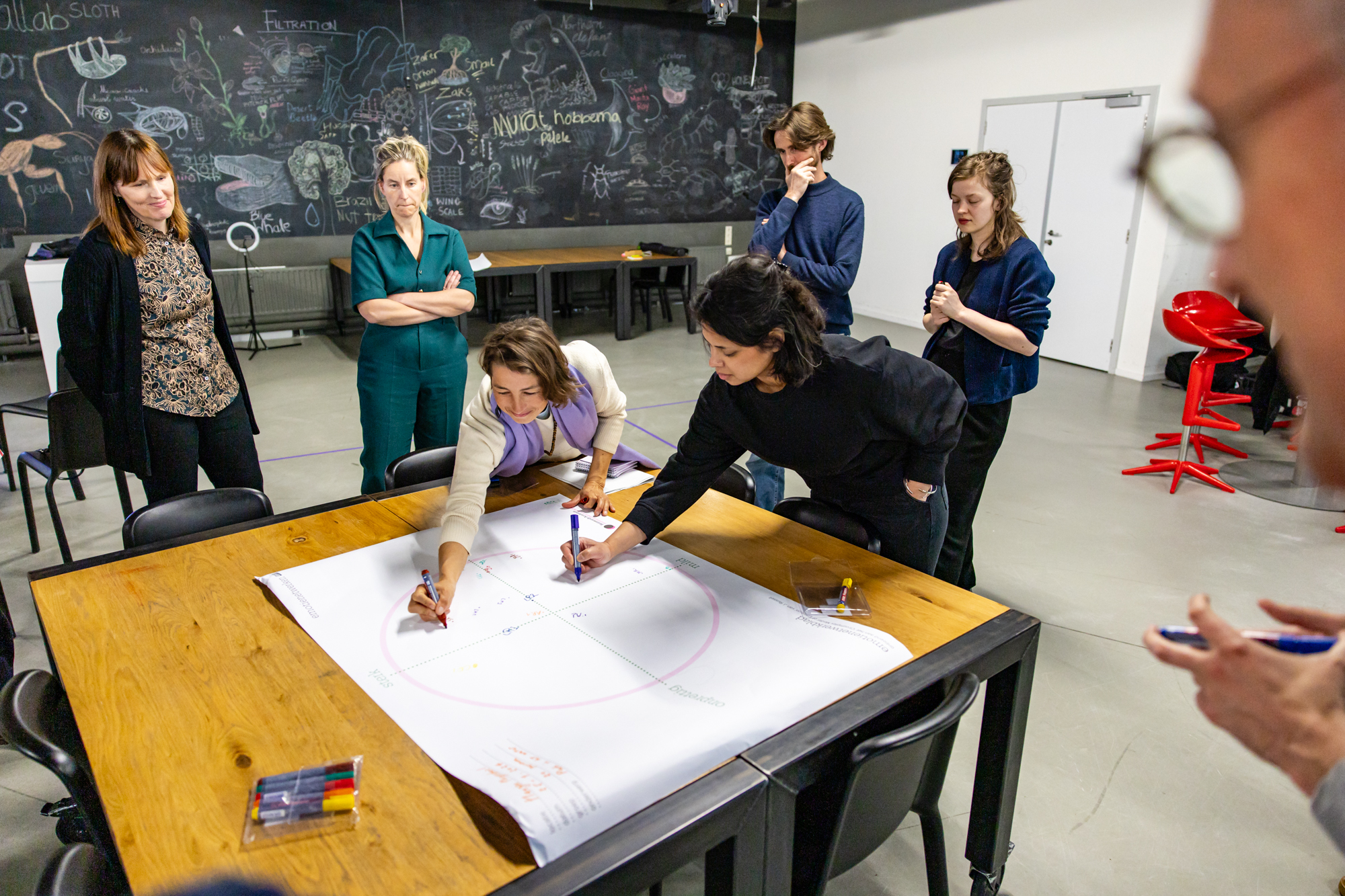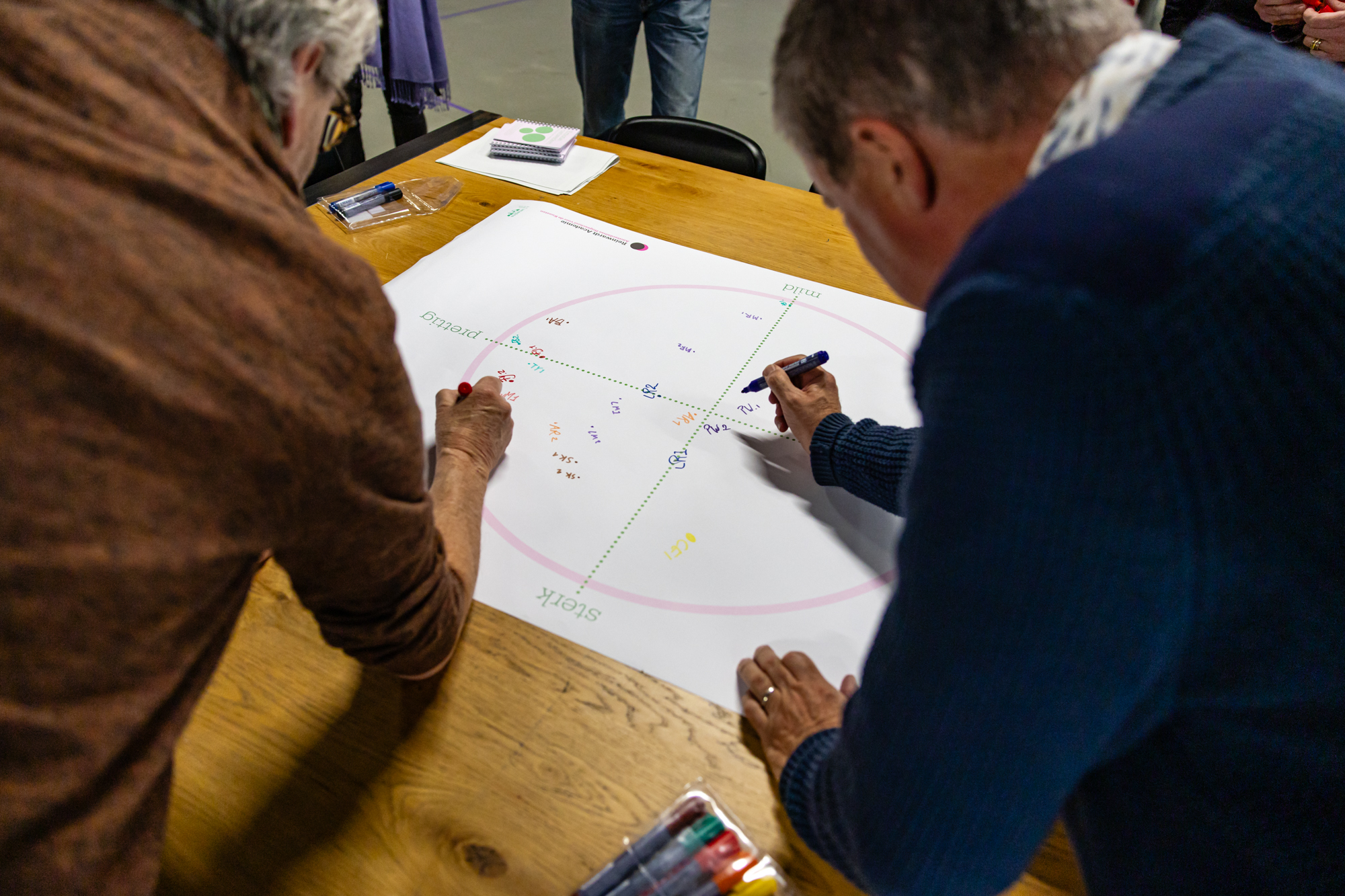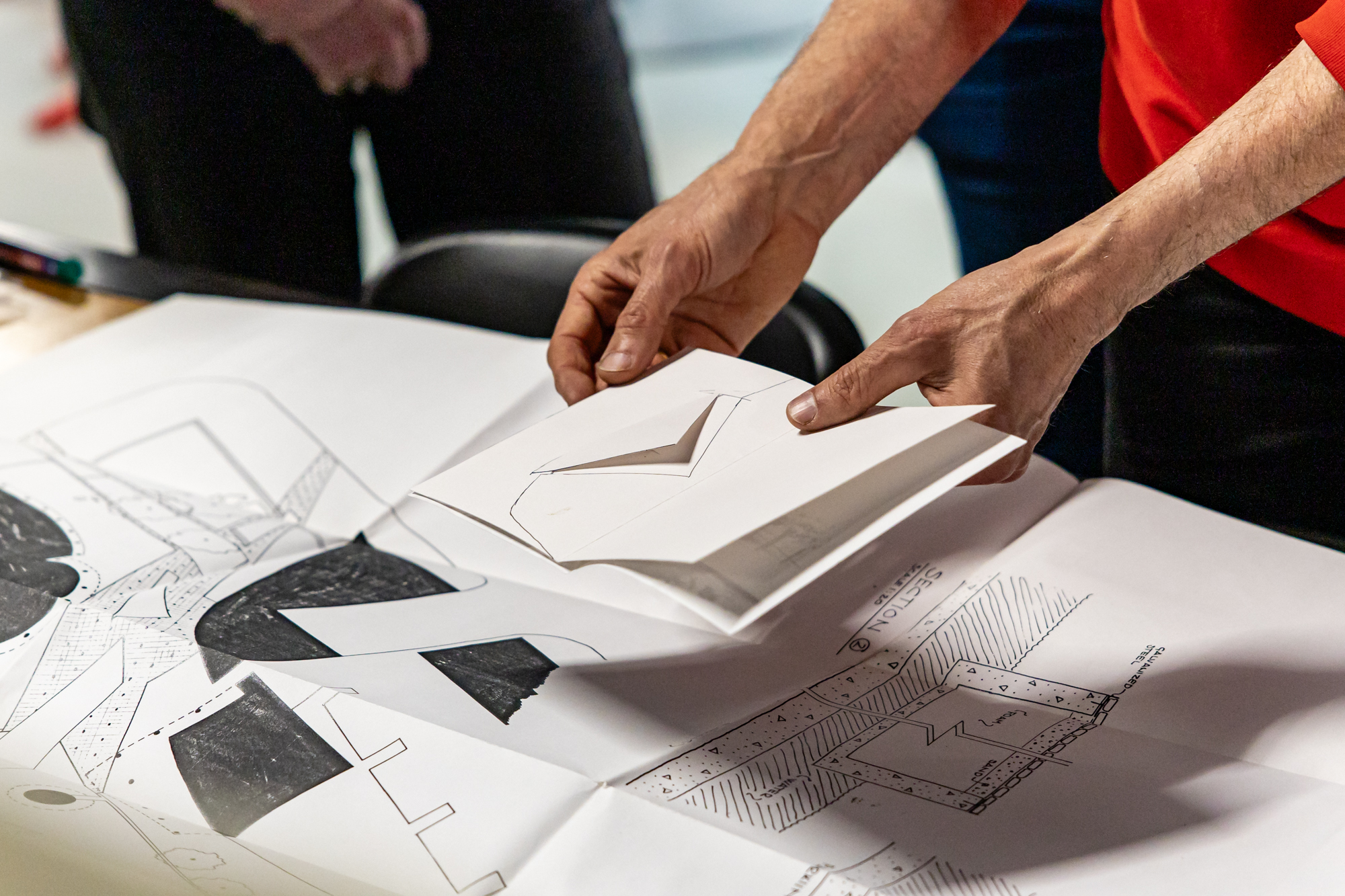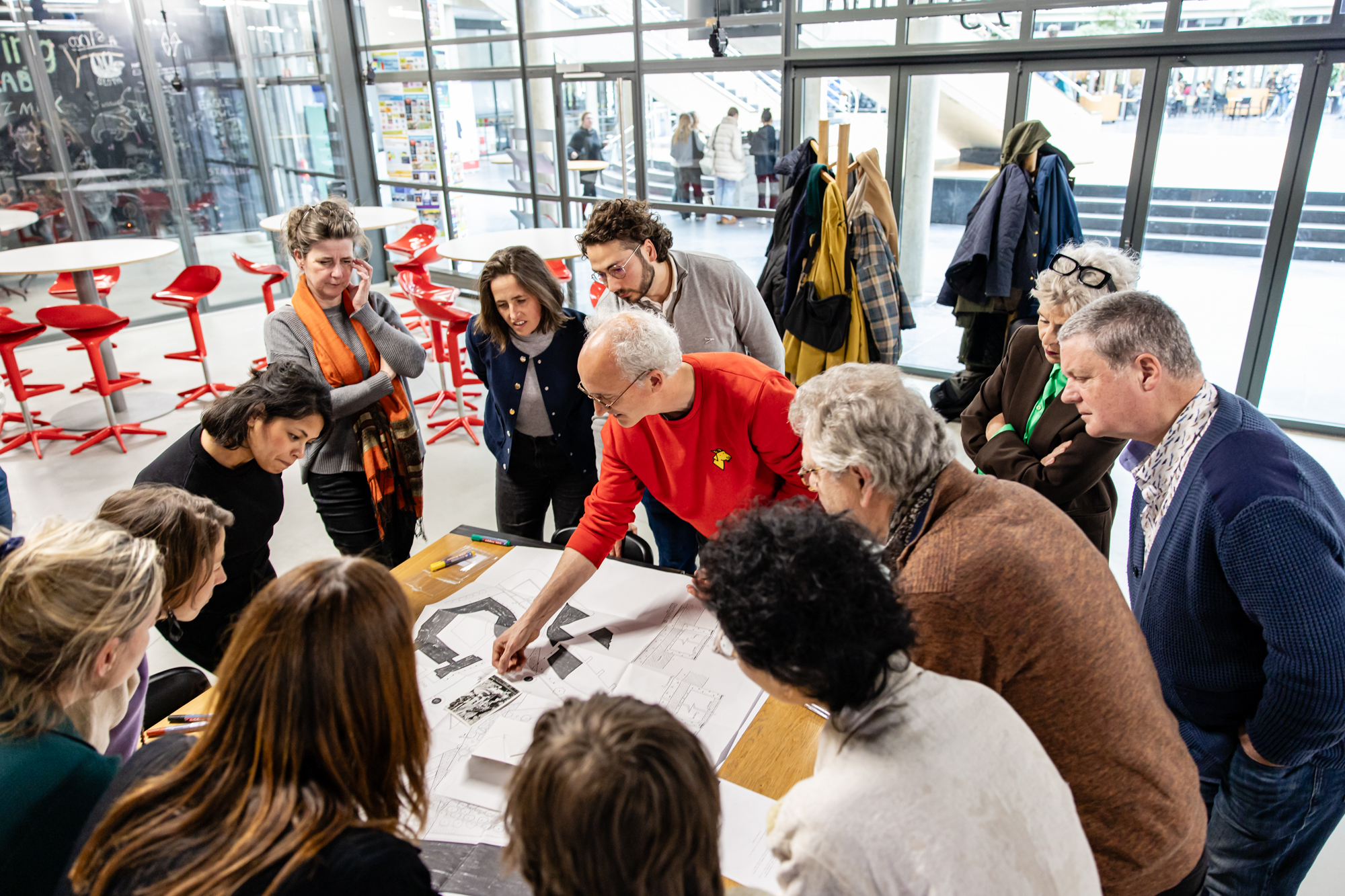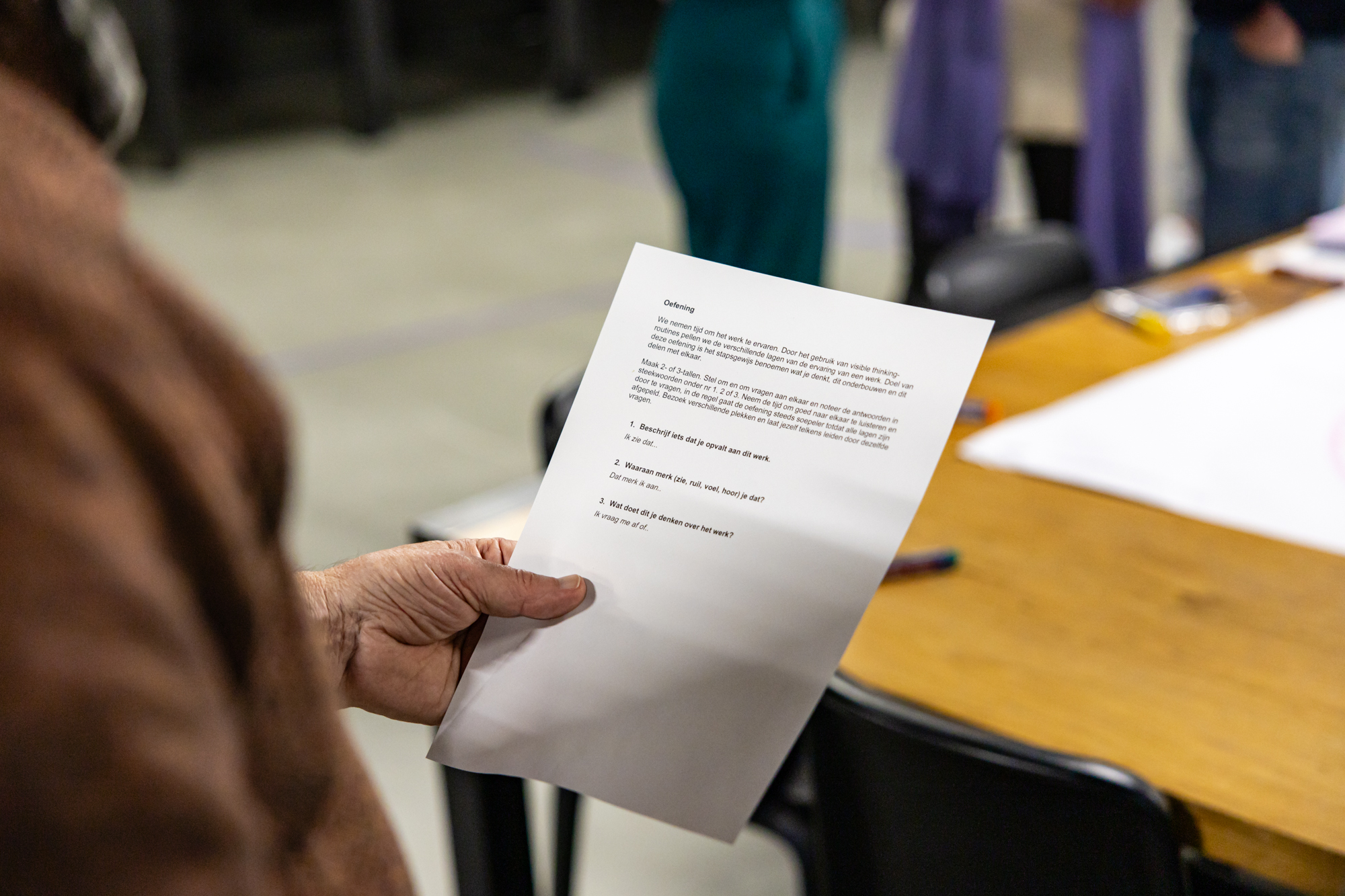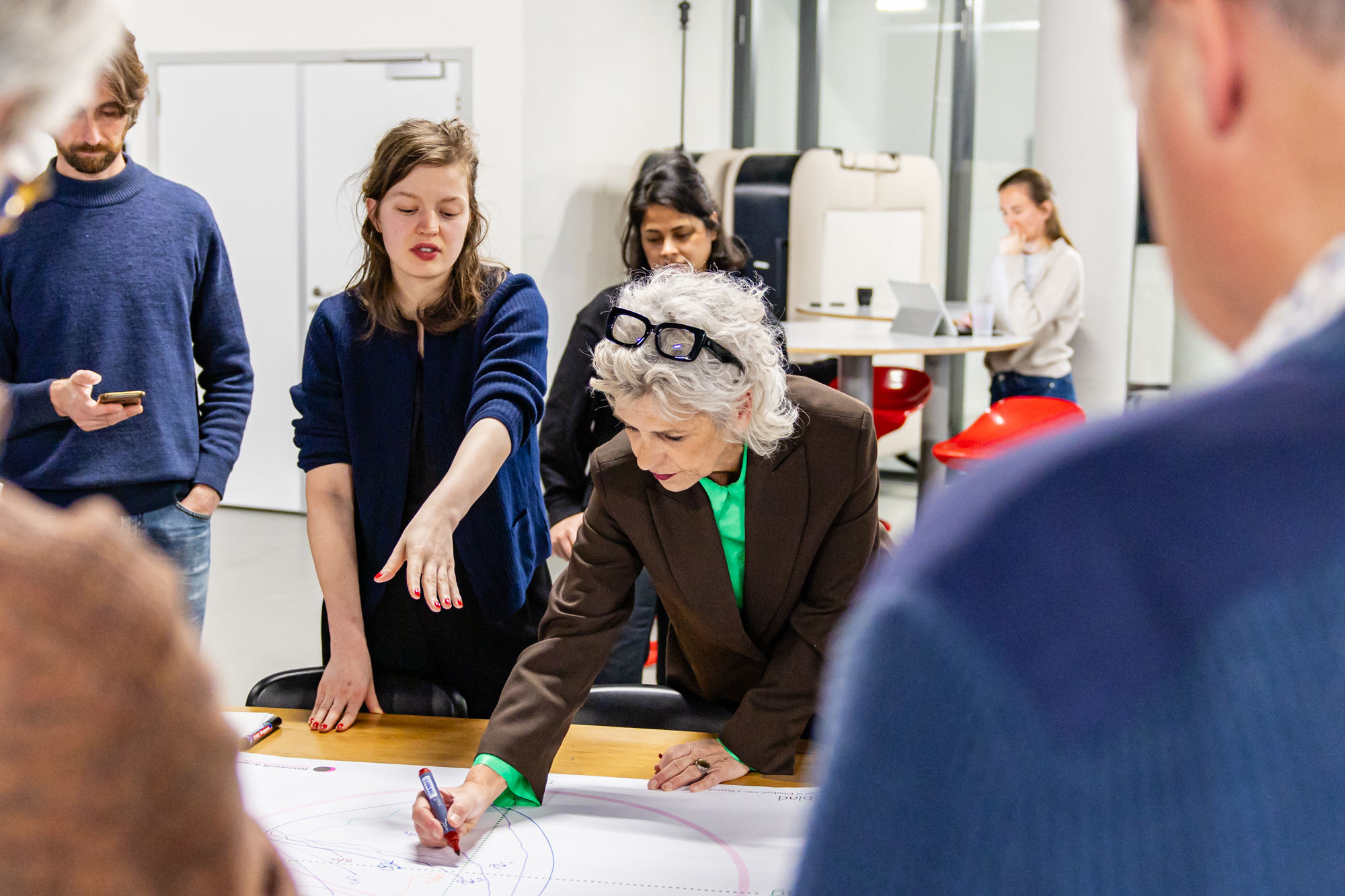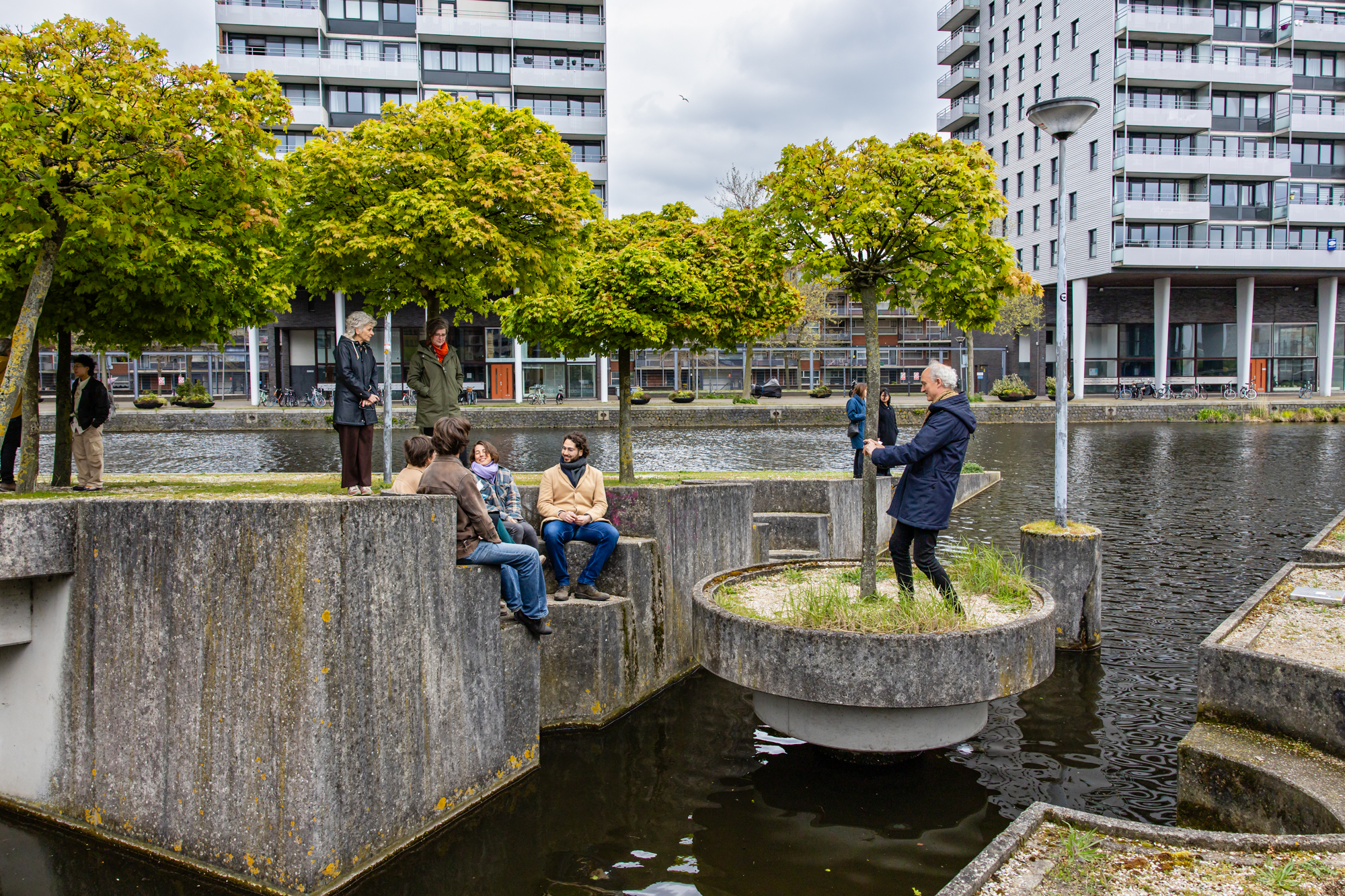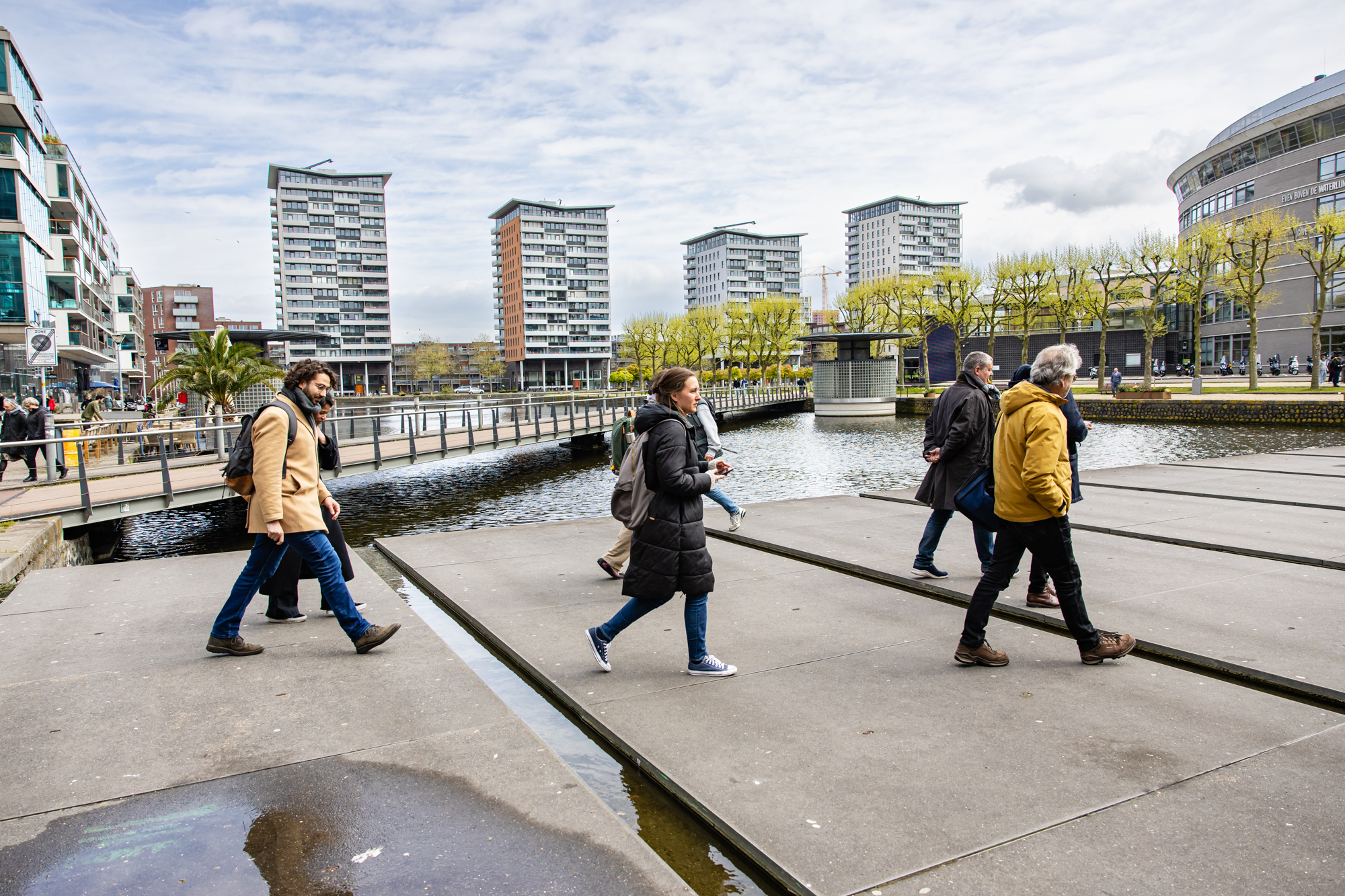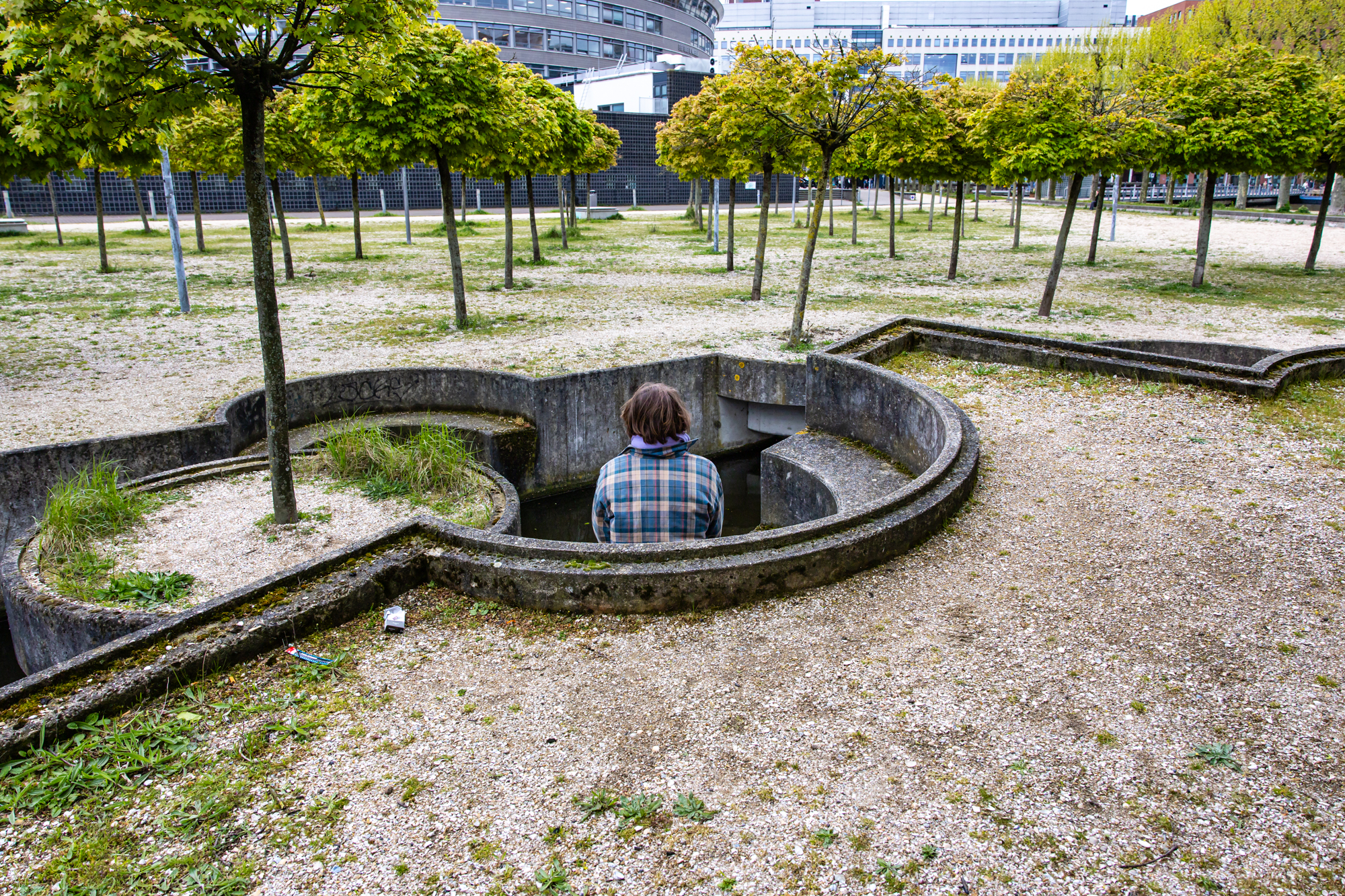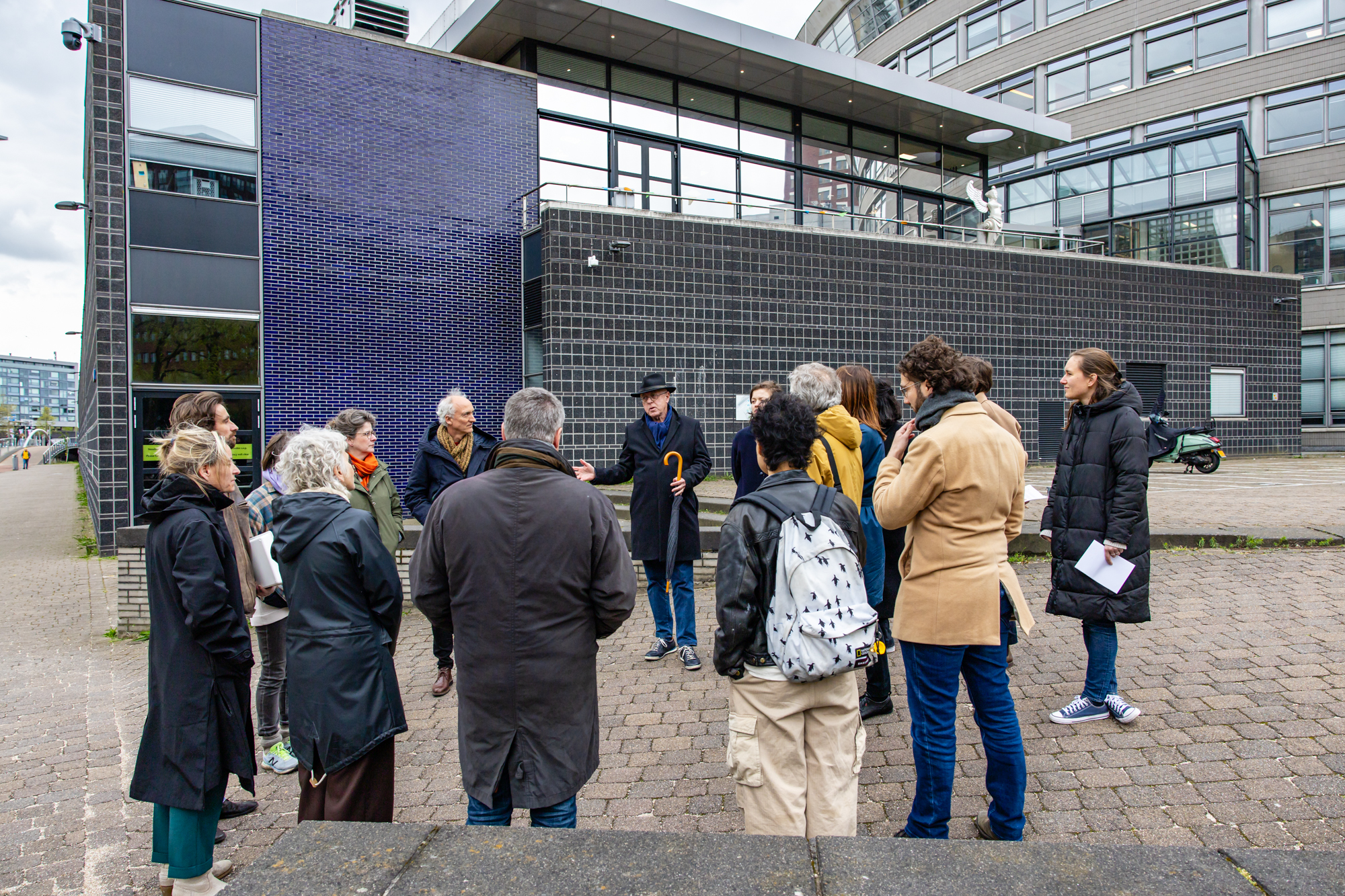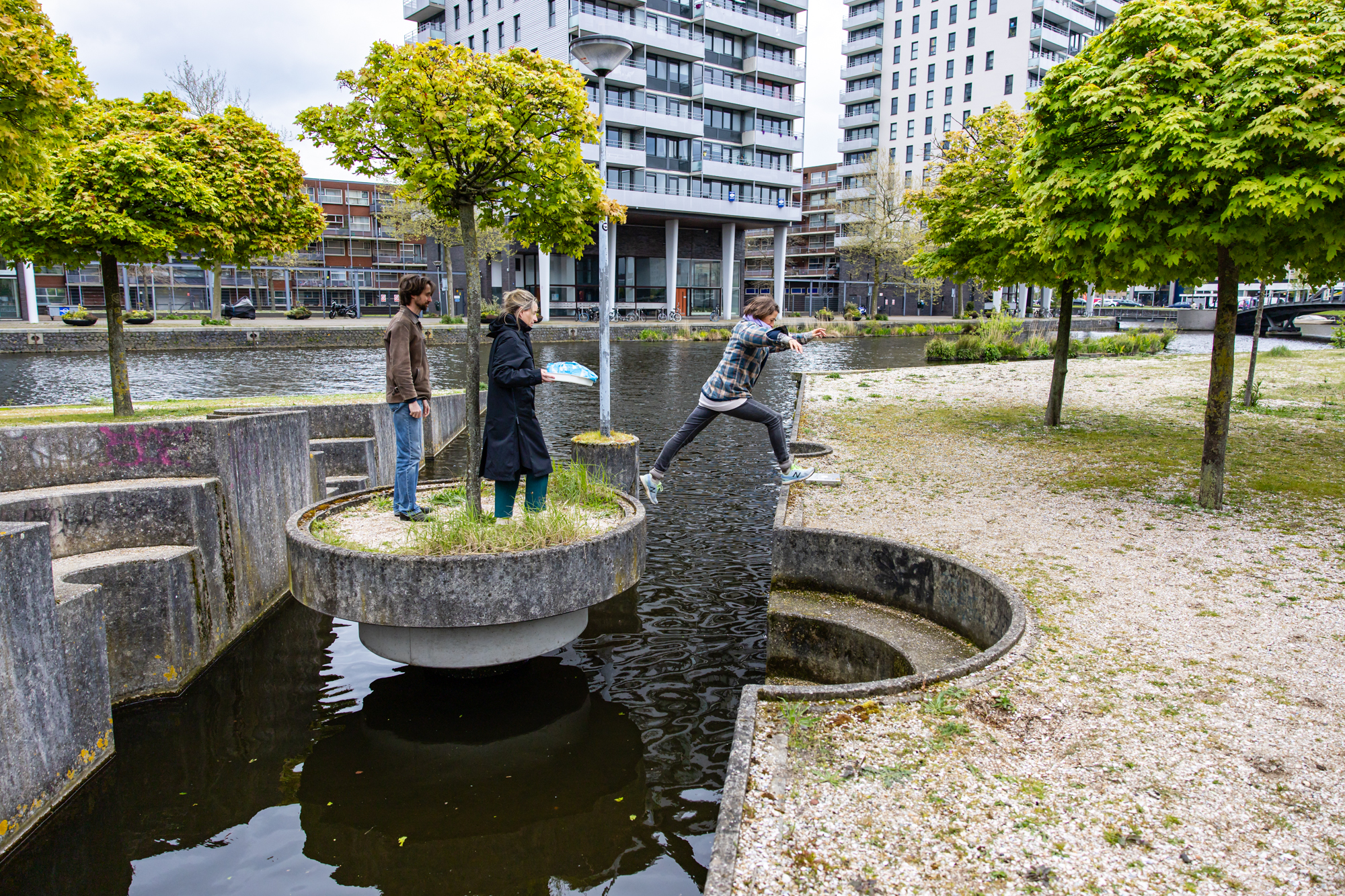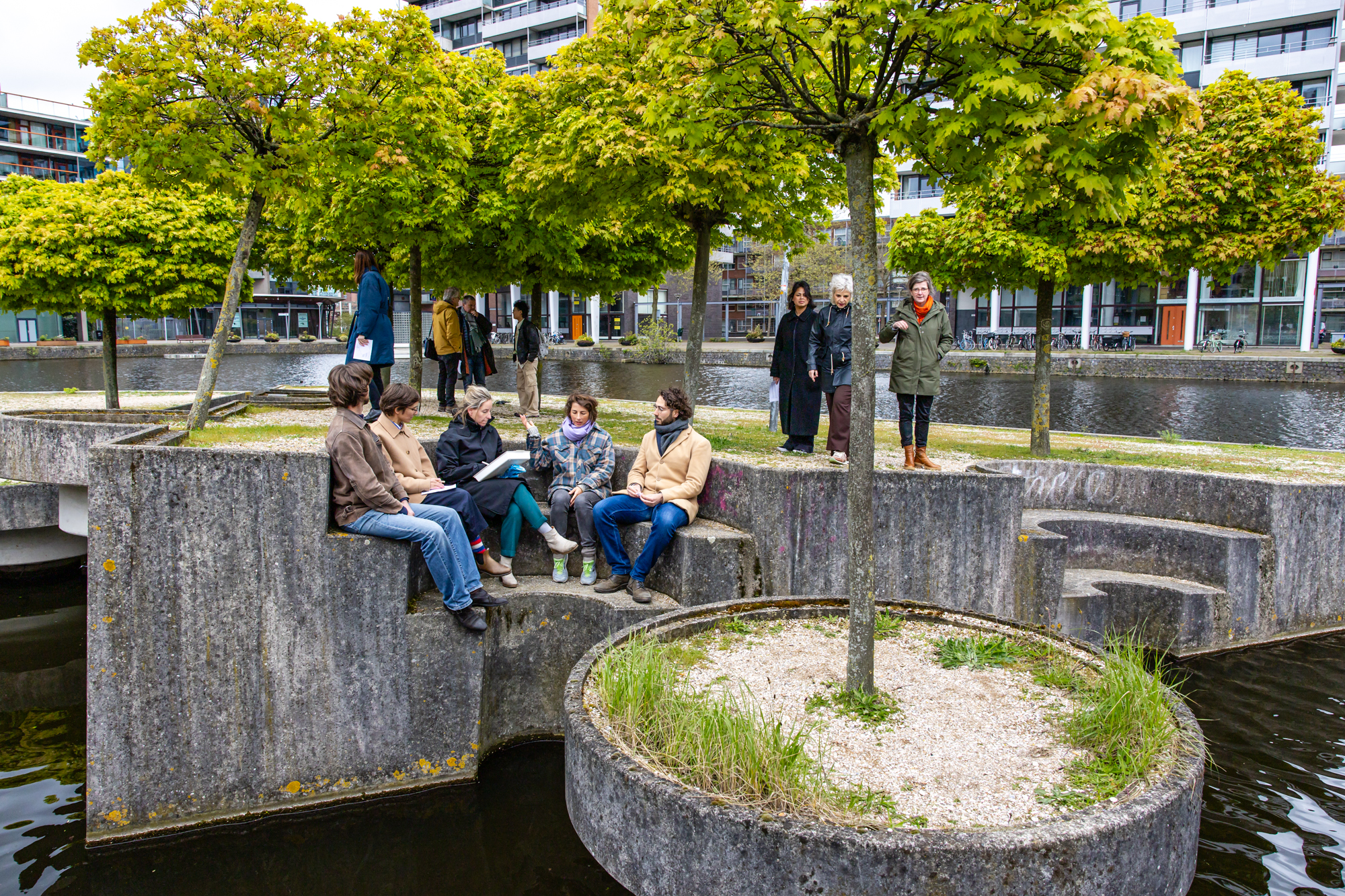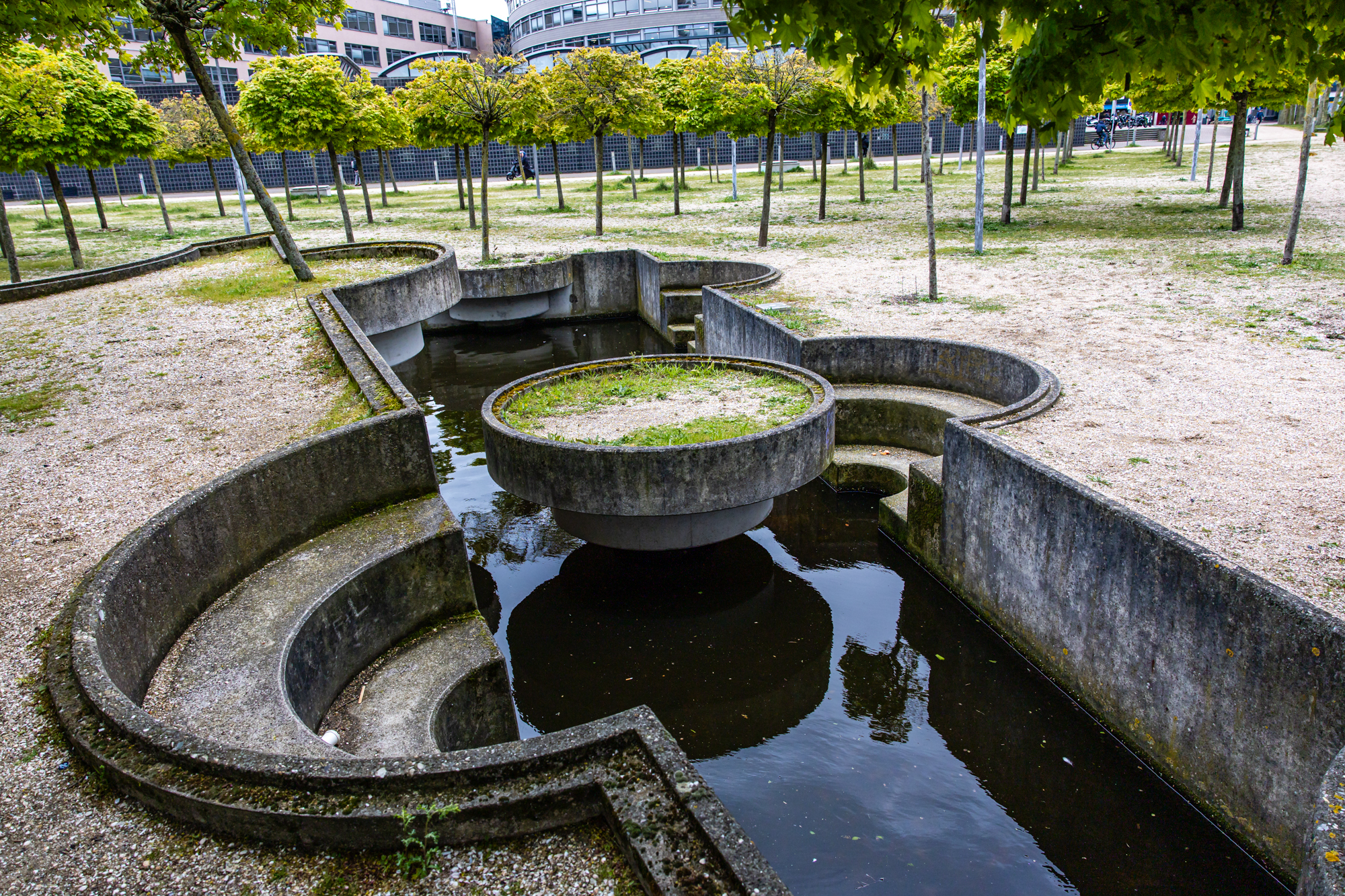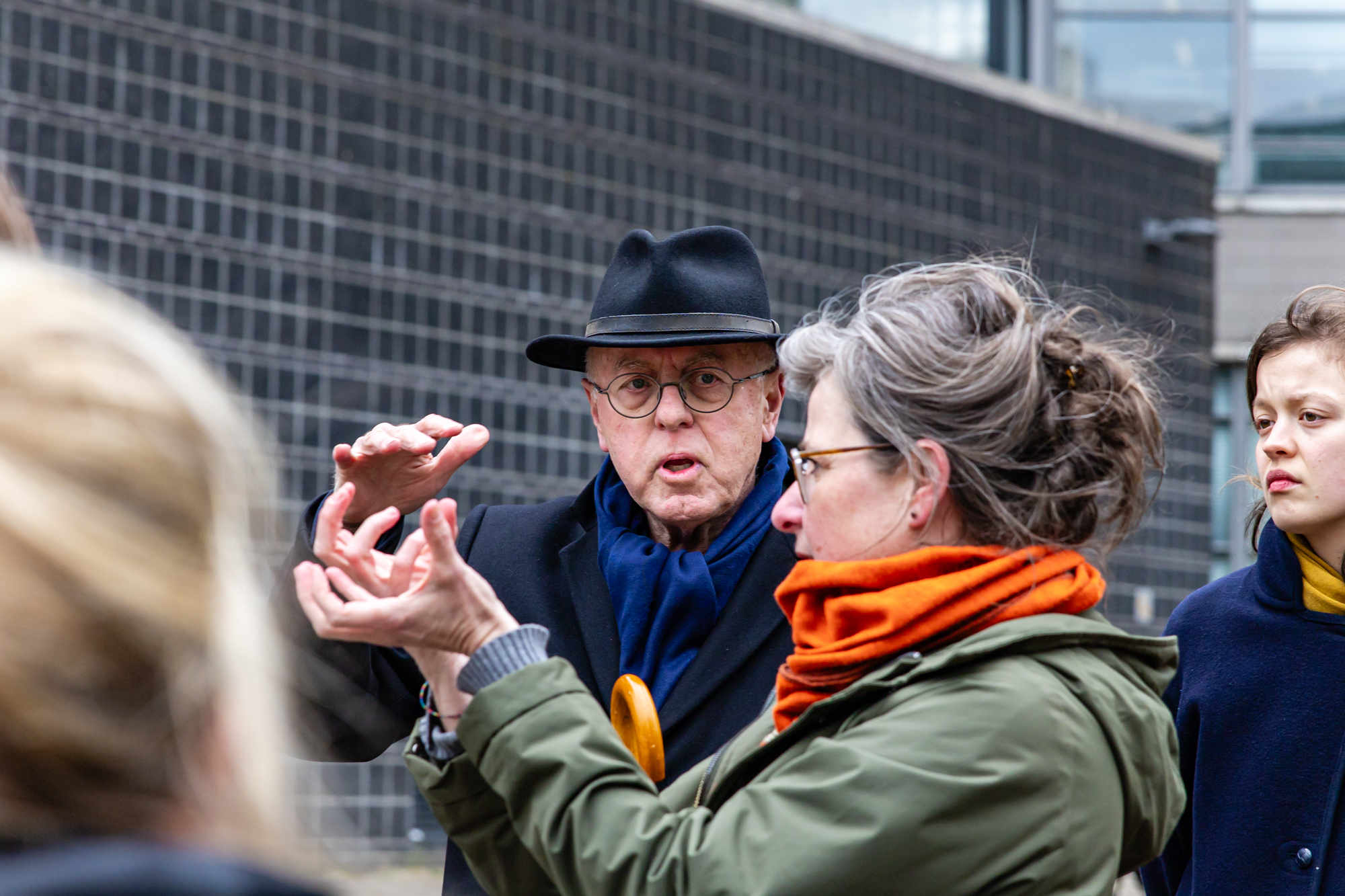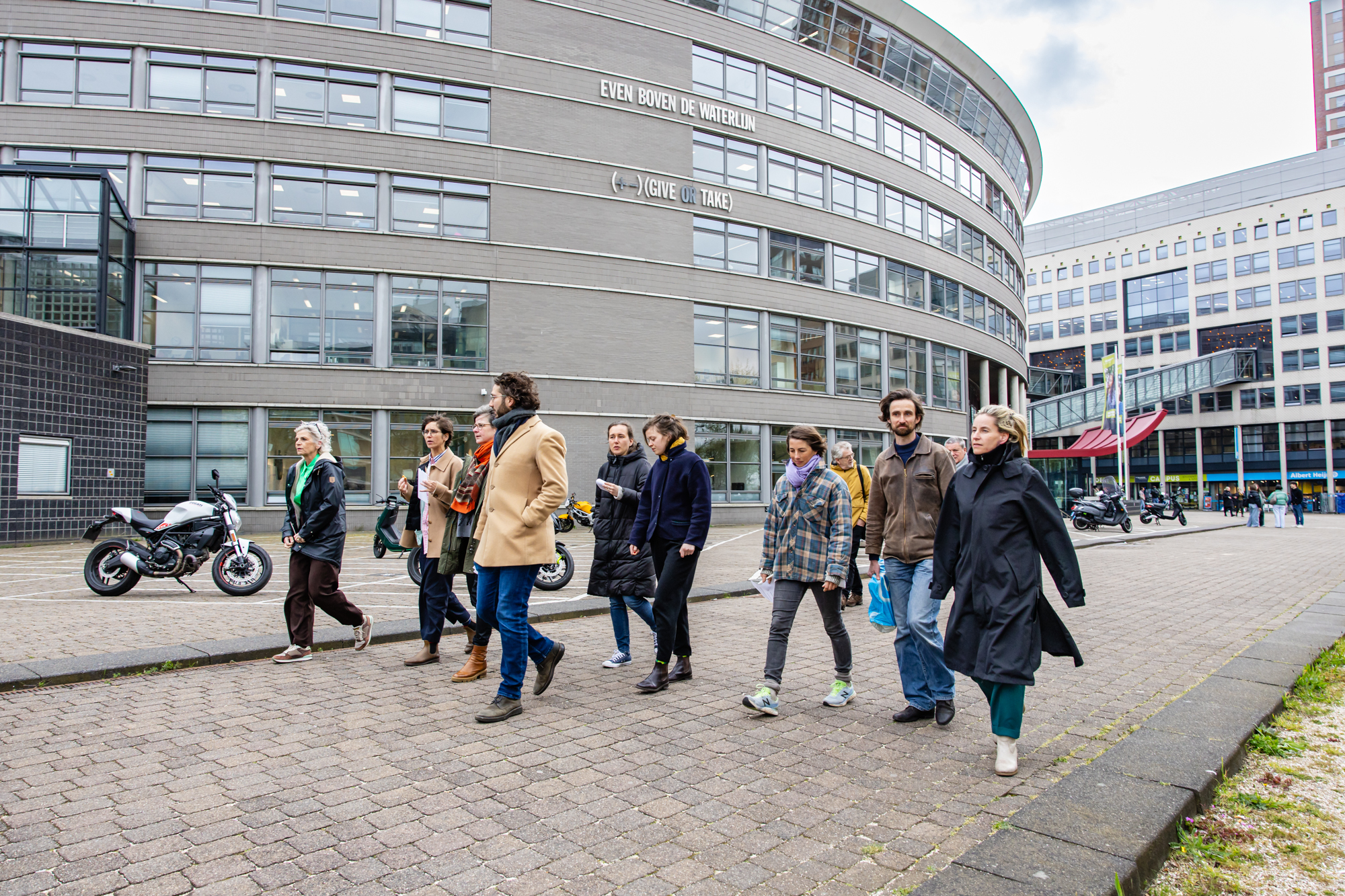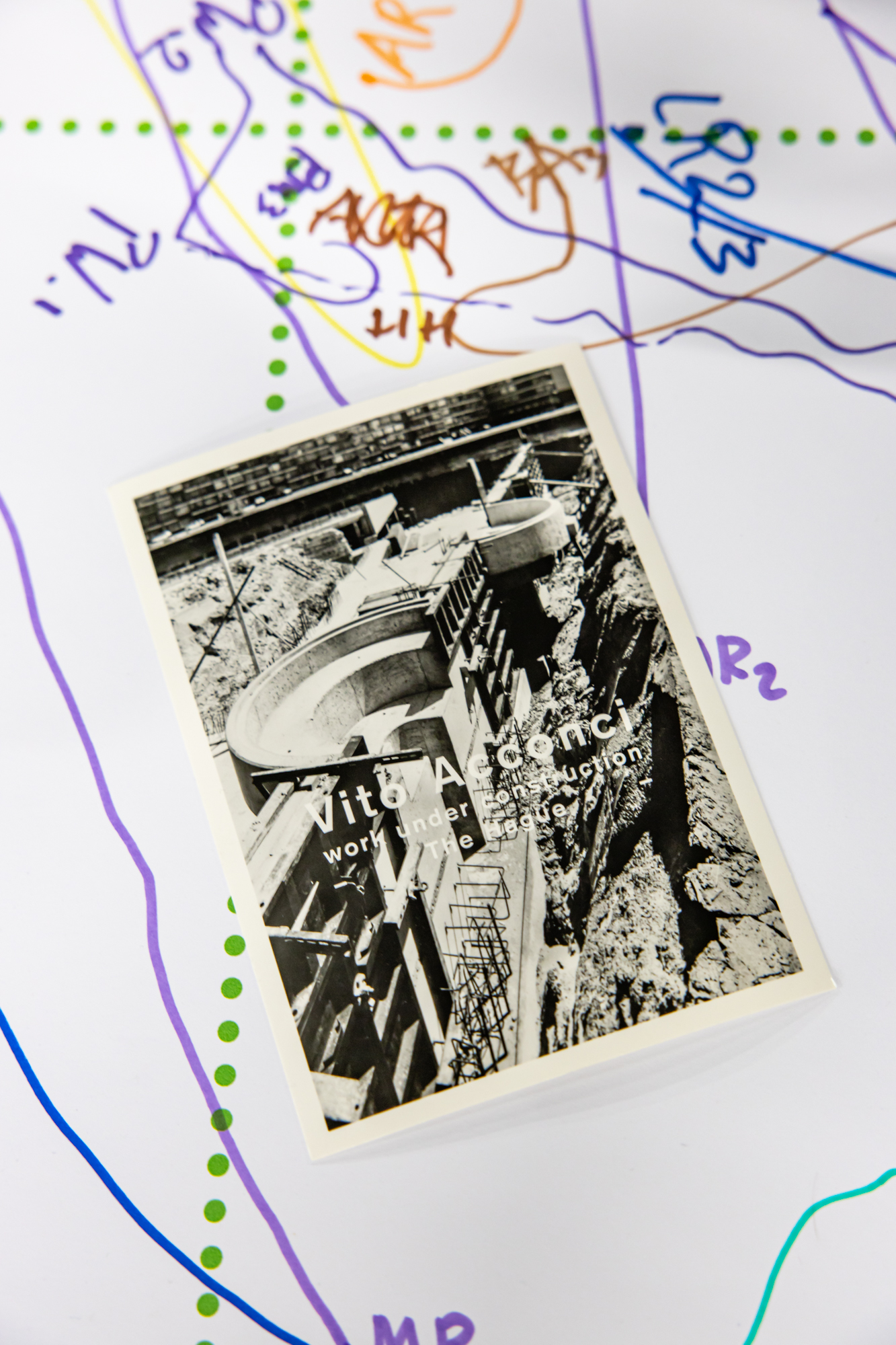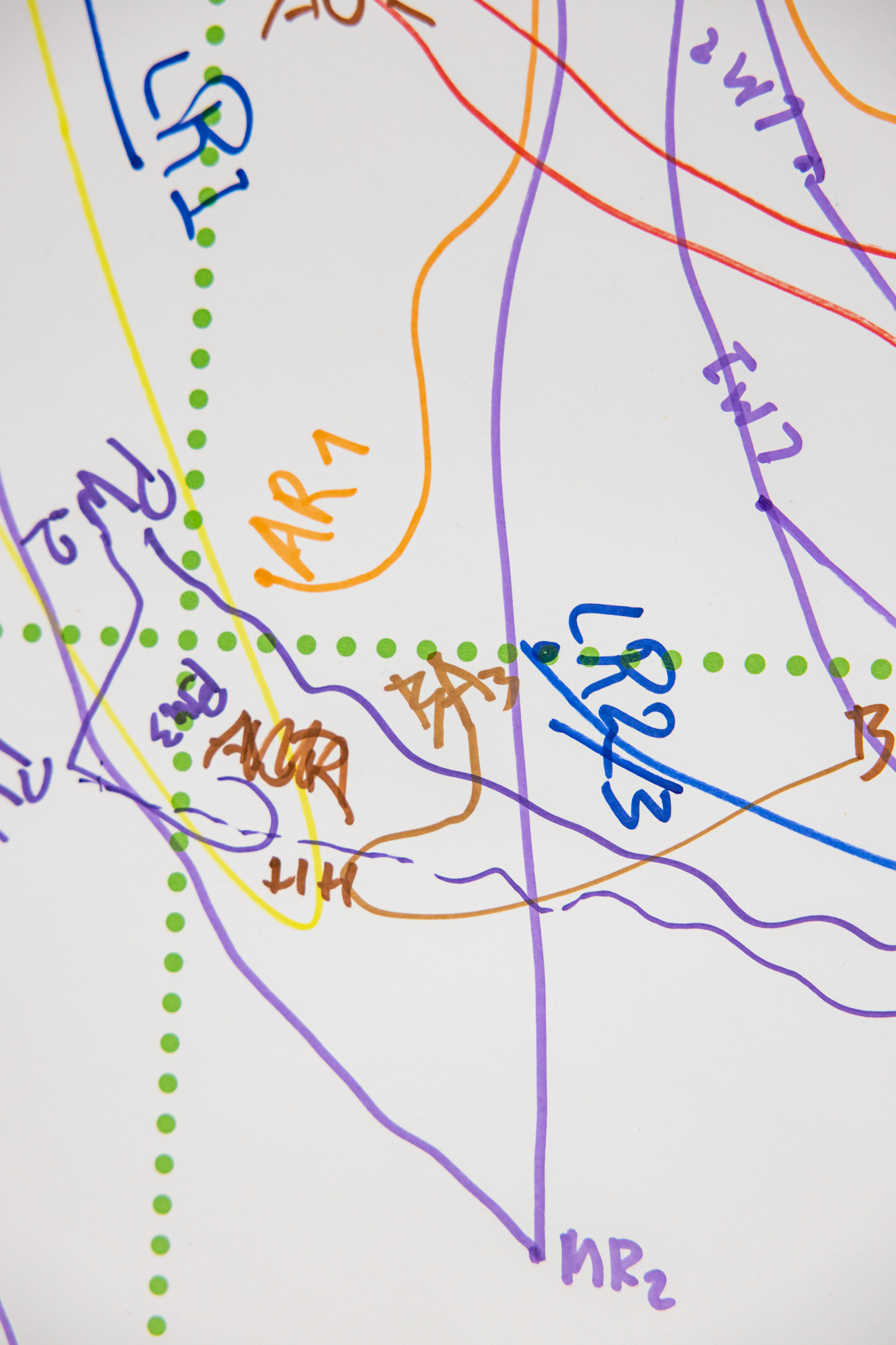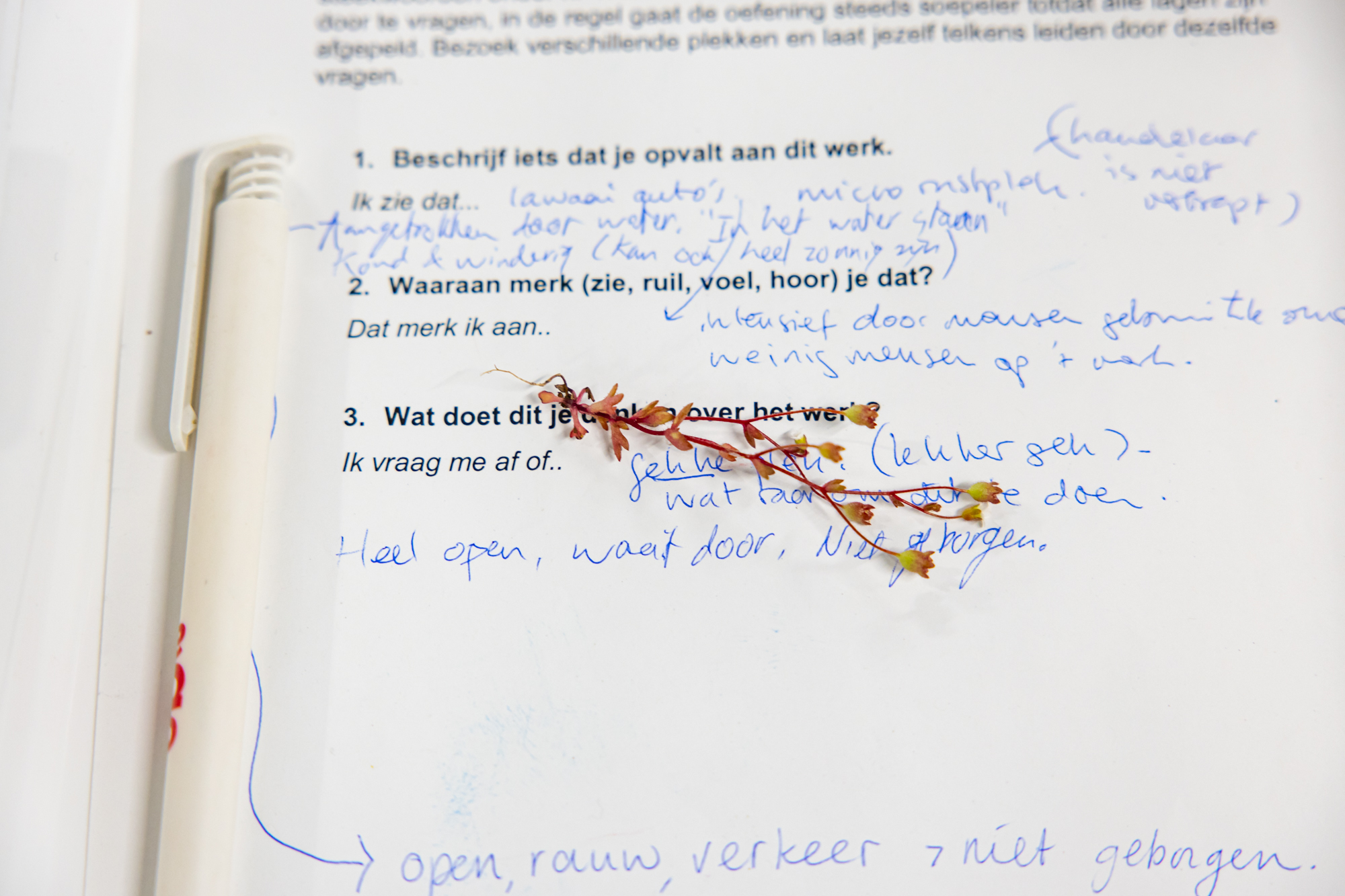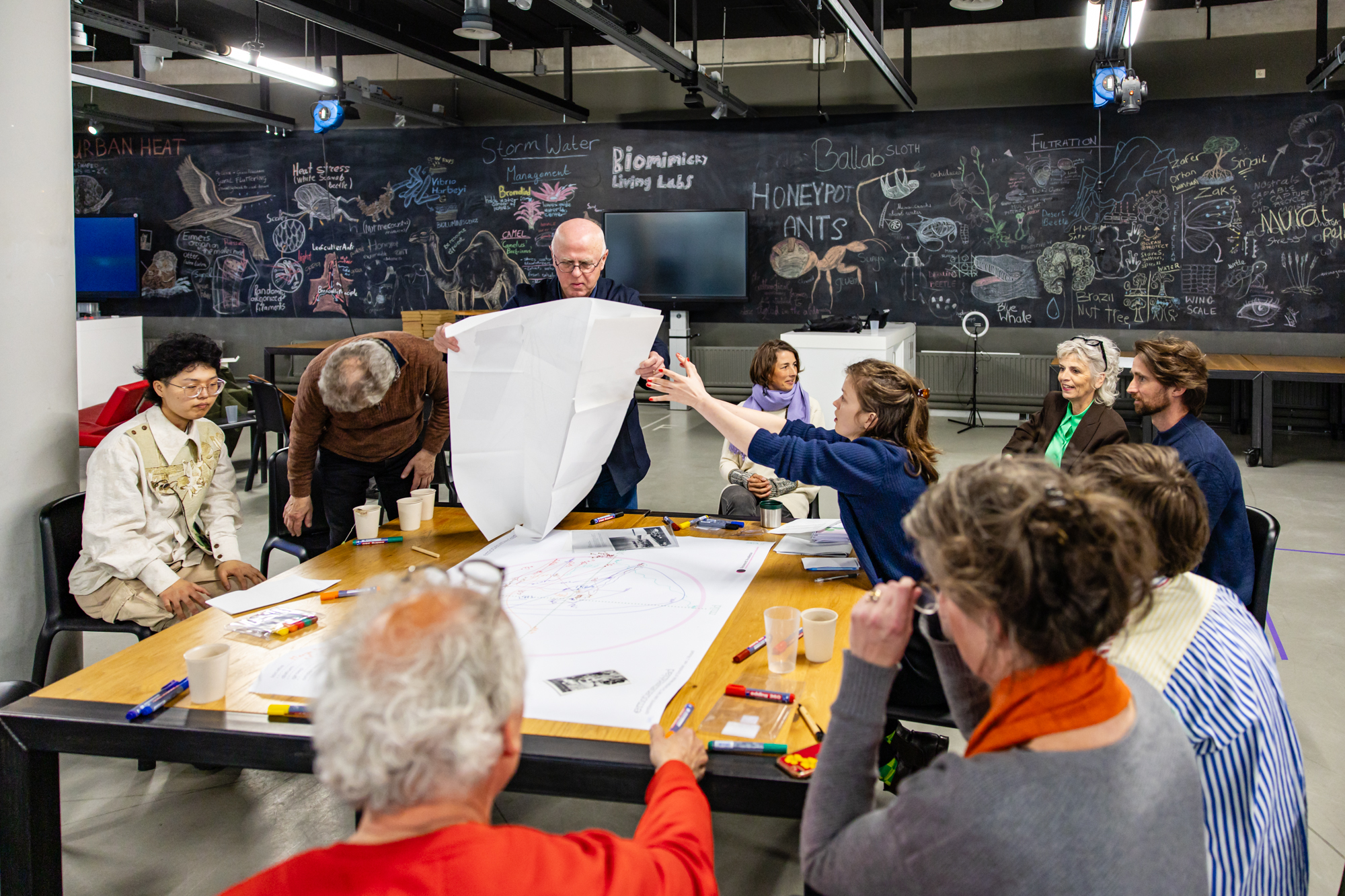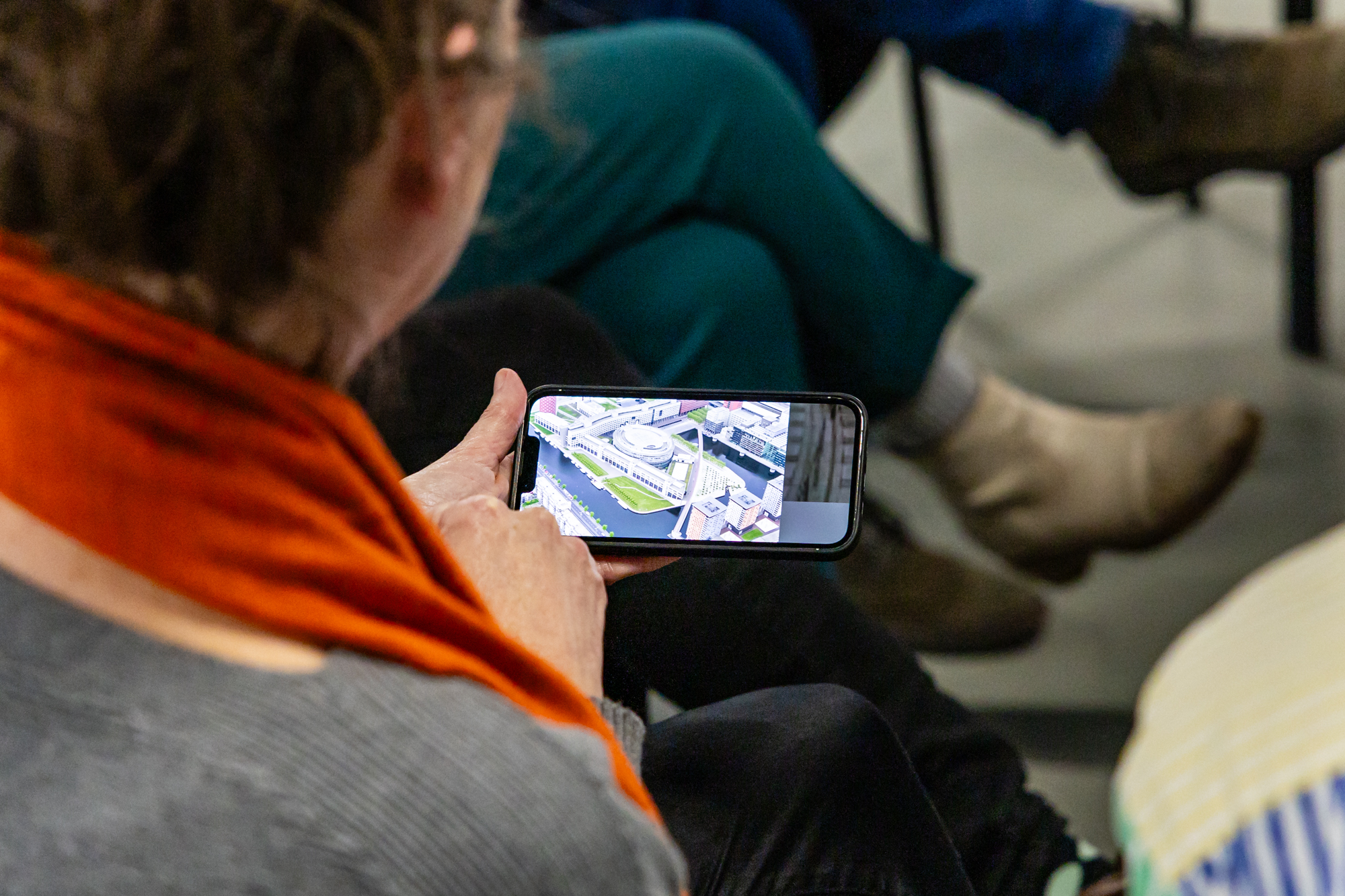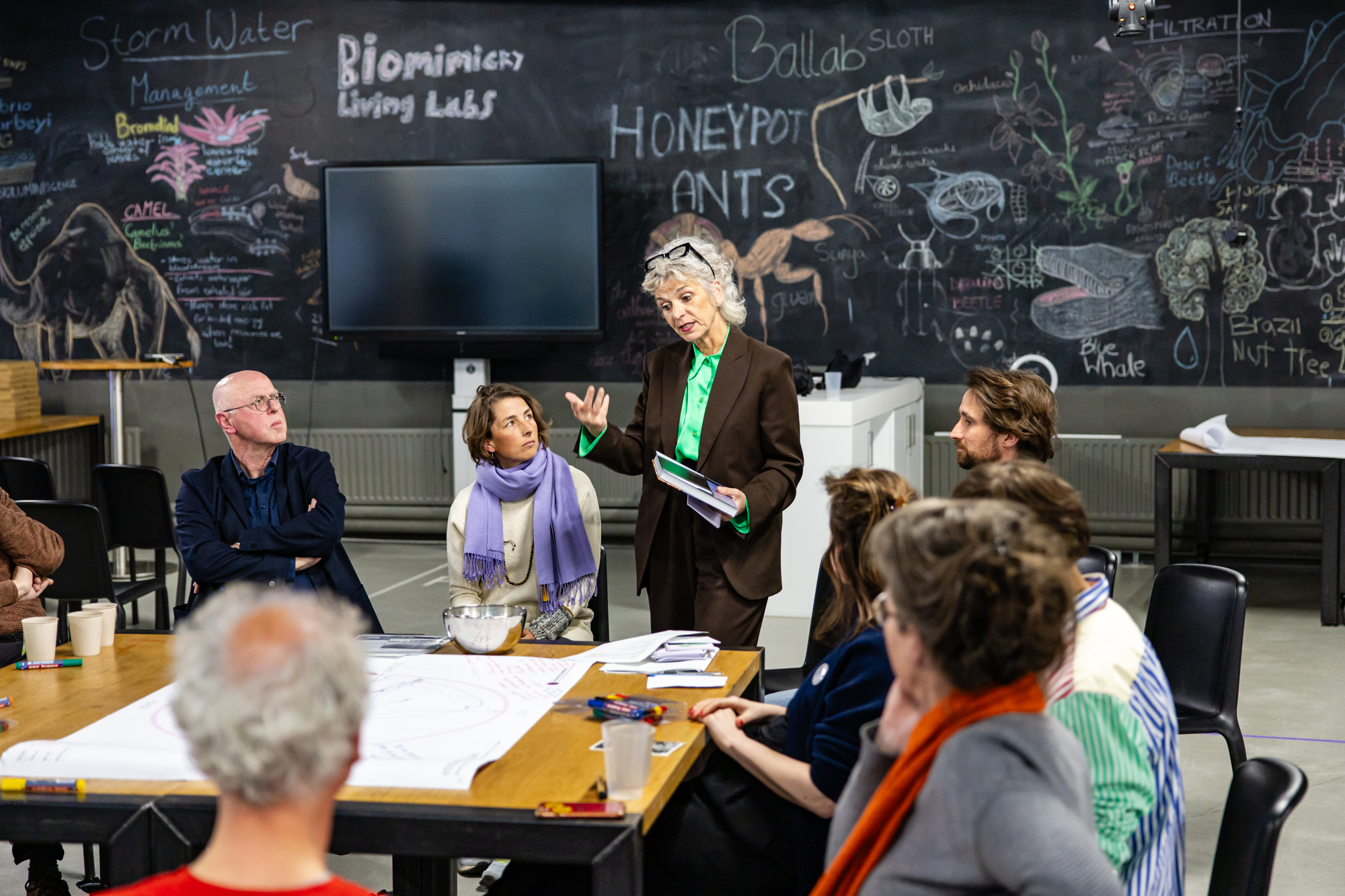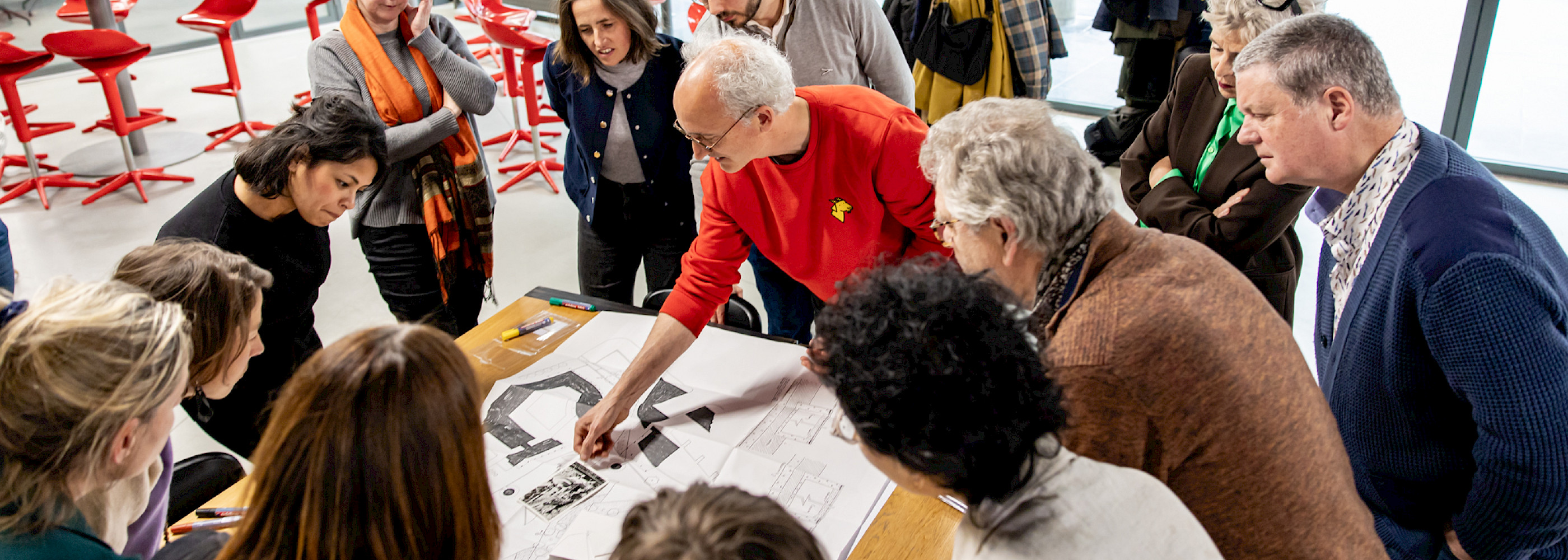
Experimenting with emotion networks during the first session of the Land Art Lives pre-program
Report of the meeting at Stroom, The Hague on April 25, 2025, by Anne van den Dool
How does one carefully scrutinize the dynamic impact of art in public spaces? Participants in the first session of the Land Art Lives pre-program experimented with this concept during an interactive meeting on April 25, 2024, at The Hague University of Applied Sciences, using the artwork Park in the Water by Vito Acconci & Studio as a case study. This workshop employed the emotion networks method, which invites people to take different positions around a complex issue.
The session is facilitated by Marit van Dijk of the Heritage Lab at the Reinwardt Academy, part of the Amsterdam School of the Arts. Approximately 15 participants attend, including an ecologist, a housing association employee from The Hague, an urban planner, a staff member from the University of Applied Sciences, several resident artists, and various officials from both The Hague municipality and Flevoland.
Intersecting axes
The session begins with a brief explanation by Marit Van Dijk. She explains that the purpose of the emotion networks method is to map the prevailing feelings around a shared issue. These feelings can be plotted on two intersecting axes: from mild to intense and from pleasant to unpleasant.
The participants first practice this using the case of the The Hague Hollands Spoor railway station. They each find their place on a purple cross marked on the floor. The conclusion is mildly positive, highlighting the contrast between the classic architecture and the hustle and bustle of the station. After hearing various perspectives from other participants, everyone is asked to reposition themselves. Some participants become newly aware of the glass dome, while others gain a heightened awareness of the hustle and bustle they had previously experienced when visiting the station.
[the text continues after the video]
Getting started
Next, the participants turn their attention to the real case: the artwork Park in the Water by Vito Acconci & Studio, situated behind the The Hague Hollands Spoor station since 1997. The area around this artwork is scheduled for a facelift in the coming years, necessitating a sustainable solution for managing the artwork. During the session, initial reactions to the artwork are first gathered by marking a point with a cross on a large sheet of paper. These initial reactions are remarkably positive: Park in the Water is clearly perceived by the participants as a pleasant, welcoming work of art that provides tranquility in a busy area. One participant even believes it should be preserved at all costs.
Others honestly admit they have never really noticed the artwork but have been intrigued by images and other people’s stories. After sharing these reactions, participants are invited to revise their positions on the axes. This change remains positive: those unfamiliar with the artwork are convinced by the experiences of others that it is a valuable contribution to the public space.
Following this, Vincent de Boer of Stroom Den Haag, the initiator of the artwork, takes the floor to briefly discuss the origins of Park in the Water. When the area was developed into a campus about 25 years ago, Acconci used the old harbor structure to create a radical intervention. Like a fragment of the landscape, he created an island that seems poised to drift away like a sloping ice floe. De Boer pulls out the original design drawings and guides the participants through the intention behind the work: a light, open space amidst the city’s hustle and bustle.
[the text continues after the photos]
Outside
Before the participants position themselves on the diagram one last time, the group finally gets to experience the artwork outdoors. They are instructed to explore the site in pairs or trios, describing what stands out about the work, what they notice, and what thoughts it evokes. Park in the Water is perceived as playful, particularly because of the island that can only be reached by leaping across the water. Standing on the sloping land, participants experience something unique that is rarely found in the city. Most participants agree on this.
At the same time, some attendees feel the artwork is artificial, lacking is accessibility, and is poorly maintained. For instance, the concrete is weathered, and the shell-covered surface is partly overgrown with weeds. Additionally, the trees, which should form a continuous canopy, are not growing properly, and there is litter scattered around the site. Moreover, the space does not invite lingering, especially for students from The Hague University of Applied Sciences: it boasts little greenery and little seating. After visiting the work, the majority of the group shifts to the less positive side of the spectrum. Despite the artwork’s potential as a place where people would like to spend time, participants are slightly disappointed by the chilly atmosphere and poor maintenance.
It raises the question of how much one should intervene in a land artwork as nature takes its course over time: is this natural progression part of the work, or should it be continuously restored to its original form? Opinions at the table differ on this: when is it a conscious choice, and when is it neglect, especially if it affects the visitor experience?
Unheard voices
The session concludes with a reflection on who was absent from the discussion. This includes local residents, daily passers-by, politicians, the disabled, children, and representatives from the studio of the now-deceased artist. Additionally, students and staff from The Hague University of Applied Sciences were not present; in fact, according to an employee of the institution, the artwork is largely unknown to them. Furthermore, plants and animals were not directly represented, except perhaps indirectly through the urban ecologist present. What would the network of emotions have looked like if they had been included in the discussion? One suspects that there might have been more contradictions in the conversation.
However, the participants recognize the significance of the session, noting that this method could be effectively used in other discussions. It reveals the complex web of emotions and thoughts, making participants aware of their own roles in this network, as well as of opposing opinions. In this way, the session demonstrates the added value of the emotion networks method when exploring the voices and feelings in a debate. It highlights how one influences others in a conversation and, in turn, is influenced by them.
***
Part of Land Art Lives
This session is part of the Land Art Lives program, an international initiative and online platform dedicated to land art in all its forms. At an interactive conference on October 3, 2024, we will discuss the future of land art. In the lead-up to this conference, sessions will be held across the country to examine current issues surrounding land art from various perspectives: political, practical, historical, and policy-related. The outcomes of these sessions will be presented at the conference. The knowledge gained will be preserved on an online platform. Land Art Lives is organized by Kunstmuseum M., in close cooperation with Land Art Flevoland. This first session of the pre-program was organized in collaboration with Stroom Den Haag.
